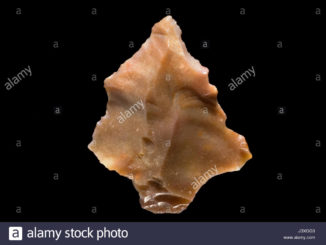
Africa is one of the greatest destination on earth. It’s wild dark and mysterious. Many people are frightened by this, but as someone who has grown up in Africa I can say that it really is a exiting place. The beauty of Africa is something few places in the world could rival with.
But what is it about Africa that makes it such an amazing destination? Well for a start it is the vast difference between each area.
South Africa is located on the southern tip of the African continent, bordered by northern neighbours Namibia, Botswana, Zimbabwe and Mozambique. It encompasses the independent mountain kingdoms of Lesotho and Swaziland and is flanked by the Atlantic Ocean on the west and the warm Indian Ocean on the east – giving the country its spectacular range of biodiversity.
South Africa enjoys a temperate and pleasant climate, with lovely warm sunny days most of the year. The seasons of the southern hemisphere are opposite to those in the northern hemisphere so our summer runs from November to February, when most of the country is characterised by hot weather with afternoon thunderstorms. Winters are generally mild and dry. South Africa enjoys one of the world’s highest average daily hours of sunshine – 8.5 compared with 3.8 in London, 6.4 in Rome and 6.9 in New York.
South Africa is home to some 43 million people – a colourful population as diverse in makeup as the country’s geography is varied.
See a map of South Africa here: [http://www.gheckosafaris.com/southafrica.asp]
Namibia never fails to enthral its visitors, to charge the fantasies and imaginations of narrators in their efforts to aptly describe the many-facetted grandeur and harsh splendour of this desert country. So many words have been written and told, and still poets do not tire to invent attributes to do justice to its unique, ever-varying magnificence.
Namibia is known for its contrasting landscapes. The desolate Namib Desert is said to be the oldest in the world, with its high dunes and awe-inspiring sense of space. Summer (October-April) Average interior temperatures range from 20C-34C during the day. Temperatures above 40C are often recorded in the extreme north and south of the country.
See a map of Namibia here: [http://www.gheckosafaris.com/namibia.asp]
Botswana is a land-locked country dominated in geographical terms by the Kalahari Desert – a sand-filled basin averaging 1,100 metres above sea level. Botswana is bordered by Zambia and Zimbabwe to the northeast, Namibia to the north and west, and South Africa to the south and southeast. At Kazungula, four countries – Botswana, Zimbabwe, Zambia and Namibia – meet at a single point mid-stream in the Zambezi River.
The Kalahari Desert stretches west of the Eastern hardveld, covering 84% of the country. The Kalahari extends far beyond Botswana’s western borders, covering substantial parts of South Africa, Namibia and Angola.
See a map of Botswana here: [http://www.gheckosafaris.com/botswana.asp]
Land of the legendary African walking safari, earth’s biggest waterfall, the wild Zambezi River, breath-taking lakes and wetlands, a profusion of birds, abundant wildlife, and raw, pulsating wilderness, …….all in one friendly country. Acknowledged as one of the safest countries in the world to visit, Zambia’s people live in peace and harmony.
See a map of Zambia here: [http://www.gheckosafaris.com/zambia.asp]
Malawi is a small landlocked country 880kms long and 220kms wide. in East Central Africa, straddling longitude 34 East and latitude 13 South. It is at the southern end of the Great African Rift Valley, a huge crack in the earth’s crust that begins in Jordon, 7,000kms to the north. It features 3,000m mountains and high plateaux, lush forests, shimmering rivers and fertile lowlands.
And, of course, there is Lake Malawi. It is 600kms long and 85kms wide and 700m deep
It is Africas third, and the worlds ninth, largest lake. Lake Malawi is a freshwater lake lying close to the southern end of the great African Rift Valley. It is the ninth largest lake in the world.
See a map of Malawi here: [http://www.gheckosafaris.com/malawi.asp]
Tanzania has more land devoted to national parks and game reserves than any other wildlife destination in the world. Everything from pristine coral reefs to the Crater Highlands, remote game reserves and the famous national parks are protected by government law and placed in trust for future generations to marvel at in wonder and awe.
Tanzania has incredible biodiversity, so wildlife populations and bird species often vary according to the season and region. A visit to one of the smaller game reserves for a short hiking trip or a day excursion is well worth the effort.
See a map of Tanzania here: [http://www.gheckosafaris.com/tanzania.asp]
Unless otherwise stated, PONIREVO and/or its licensors DO NOT own any intellectual property rights in the website and material on the website. Majority of the site’s content has been scraped and auto posted by a third party artificial intelligence program —– PONIREVO Creation Team.
Proudly WWW.PONIREVO.COM
by Shawn Jooste



